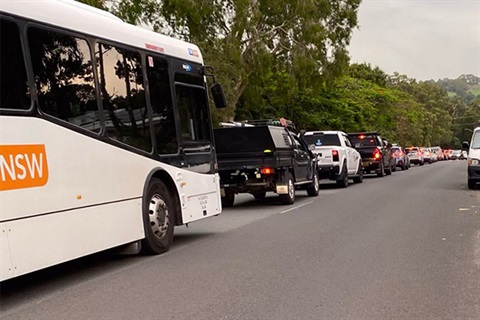Clifford Street intersection safety measures

Latest information
At a meeting on 13 March 2025, Councillors resolved to:
- Cease pursuing the implementation of a signalised intersection at Clifford Street
- Pursues a grant variation for design and construction of pedestrian safety improvement treatments (without traffic lights or a roundabout) on Broken Head Road and Clifford Street and other traffic calming measures.
- Staff to provide further update once TfNSW provide feedback on variation request.
- Plans and investigates the option of a roundabout for the Broken Head Road/Clifford Street intersection that prioritises pedestrian and cyclist safety.
- Considers funding for future planning at the next Quarterly Budget Review.
Background
In late 2024 we received funding from the Australian and NSW Governments to install traffic lights at the intersection of Clifford Street and Broken Head Road at Suffolk Park to improve safety for:
- Drivers
- Pedestrians
- Cyclists
- Other road users.
About the intersection
The Clifford Street intersection is the only access for some 585 properties including emergency services, shops, hotel, holiday accommodation and caravan park. It is also the only access to the beach in this area.
It's a busy intersection, especially at peak times, with 20,000 vehicle movements a day on Broken Head Road and 6,000 on Clifford Street.
From 2014 to 2024 there were 10 crashes around the intersection, resulting in seven casualties as well as many near misses and long delays.
With the population expected to continue to grow, so too will congestion and safety risks for drivers and pedestrians.